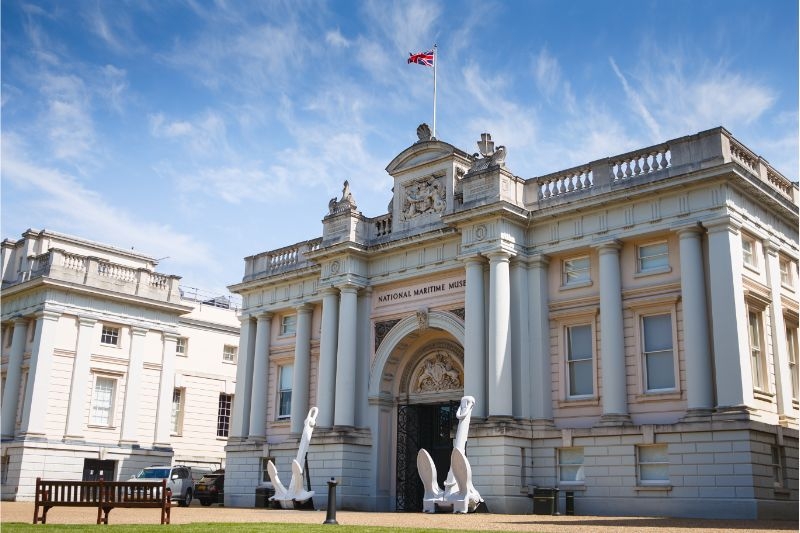The Significance of Historic Architecture
Historic architecture is a testament to the ingenuity and creativity of our ancestors. It reflects the values, beliefs, and aspirations of the societies that created it. The UK, with its long and storied history, boasts a plethora of architectural marvels that have withstood the test of time. These structures serve as living chronicles, reminding us of the past while shaping our present and future.
One of the key aspects of historic architecture is its ability to transport us to a different era. Exploring a medieval castle or wandering through a centuries-old cathedral evokes a sense of awe and wonder, allowing us to connect with our roots and understand the heritage that has shaped the nation. Additionally, historic architecture often serves as a symbol of national identity, representing the cultural legacy of a particular region.
Famous Historic Architecture Landmarks in the UK
The UK is home to numerous iconic landmarks that have become synonymous with the country’s rich architectural heritage. One such landmark is the Tower of London, a UNESCO World Heritage Site and a symbol of power and intrigue. With its imposing medieval architecture and fascinating history, the Tower of London stands as a testament to the turbulent past of the nation.
Another remarkable example is the majestic Windsor Castle, the oldest and largest inhabited castle in the world. Nestled on a picturesque hill, this iconic fortress has witnessed more than 900 years of British history and continues to serve as an official residence of the Queen. Its grandeur and architectural splendor make it a must-visit destination for history and architecture enthusiasts alike.
Architectural Styles Throughout the Centuries
As I delved deeper into the world of historic architecture in the UK, I was captivated by the diverse architectural styles that have emerged over the centuries. From the intricate Gothic masterpieces to the elegant Georgian townhouses, each era has left its mark on the architectural landscape of the country.
The Gothic architecture of the medieval period is perhaps the most iconic. Cathedrals such as Canterbury Cathedral and York Minster showcase the soaring arches, ribbed vaults, and intricate stained glass windows that define this style. Moving forward in time, the Tudor period introduced half-timbered houses with their distinctive black and white facades, while the Georgian era embraced classical proportions and elegant symmetry.
Preserving and Conserving Historic Architecture
Preserving and conserving historic architecture is of utmost importance to ensure that future generations can continue to appreciate and learn from these magnificent structures. The UK has taken significant steps to protect its architectural heritage through legislation and conservation organizations.
English Heritage, for example, plays a vital role in safeguarding historic sites and providing expert advice on their maintenance and restoration. Additionally, the National Trust actively manages a vast portfolio of historic properties, opening them up to the public and ensuring their preservation for years to come.
Exploring Historic Architecture in Different Regions of the UK
One of the joys of discovering historic architecture in the UK is the opportunity to explore different regions, each with its unique architectural gems. Whether you’re wandering the cobbled streets of Edinburgh’s Old Town or strolling through the charming villages of the Cotswolds, there’s always something remarkable to discover.
In Scotland, the Edinburgh Castle stands proudly atop the Royal Mile, offering breathtaking views of the city. Its imposing medieval architecture and rich history make it a must-visit destination for any architecture enthusiast. In Wales, the medieval Conwy Castle is a true masterpiece, with its well-preserved walls and towers providing a glimpse into the past.
Iconic Castles and Palaces in the UK
No exploration of historic architecture in the UK would be complete without a visit to its iconic castles and palaces. These magnificent structures not only provide a glimpse into the lives of kings and queens but also showcase the architectural prowess of the time.
The Palace of Westminster, home to the Houses of Parliament, is an architectural masterpiece that blends Gothic and Elizabethan styles. Its iconic clock tower, known as Big Ben, has become an enduring symbol of London. Another must-see is the stunning Hampton Court Palace, a Tudor palace that showcases the grandeur and opulence of the era.
Hidden Gems of Historic Architecture in the UK
While the famous landmarks often steal the spotlight, the UK is also home to numerous hidden gems of historic architecture. These lesser-known sites may lack the fame of their counterparts but offer a unique and intimate experience.
One such hidden gem is the Strawberry Hill House in Twickenham, London. Built in the Gothic Revival style, this enchanting villa was the personal residence of the writer Horace Walpole. Its whimsical architecture and beautiful interiors make it a true architectural gem.
Tips for Visiting Historic Architecture Sites
When visiting historic architecture sites in the UK, it’s essential to plan ahead to make the most of your experience. Here are a few tips to ensure a smooth and enriching journey:
- Research the history and significance of the site before your visit to fully appreciate its importance.
- Check for any guided tours or audio guides that can provide valuable insights.
- Respect the rules and regulations of the site, including any photography restrictions.
- Take your time to explore and soak in the atmosphere, allowing yourself to be transported back in time.
Conclusion: Appreciating the Timeless Beauty of Historic Architecture in the UK
As I conclude my journey through the centuries of historic architecture in the UK, I am left in awe of the timeless beauty that these structures possess. From the grand castles to the hidden gems tucked away in quaint villages, the UK offers a treasure trove of architectural wonders that transport us to different eras.
Through the preservation and conservation efforts, these architectural marvels continue to inspire and educate generations. Exploring the diverse regions and architectural styles of the UK has been a transformative experience, deepening my appreciation for the rich cultural heritage that lies within its historic architecture.





